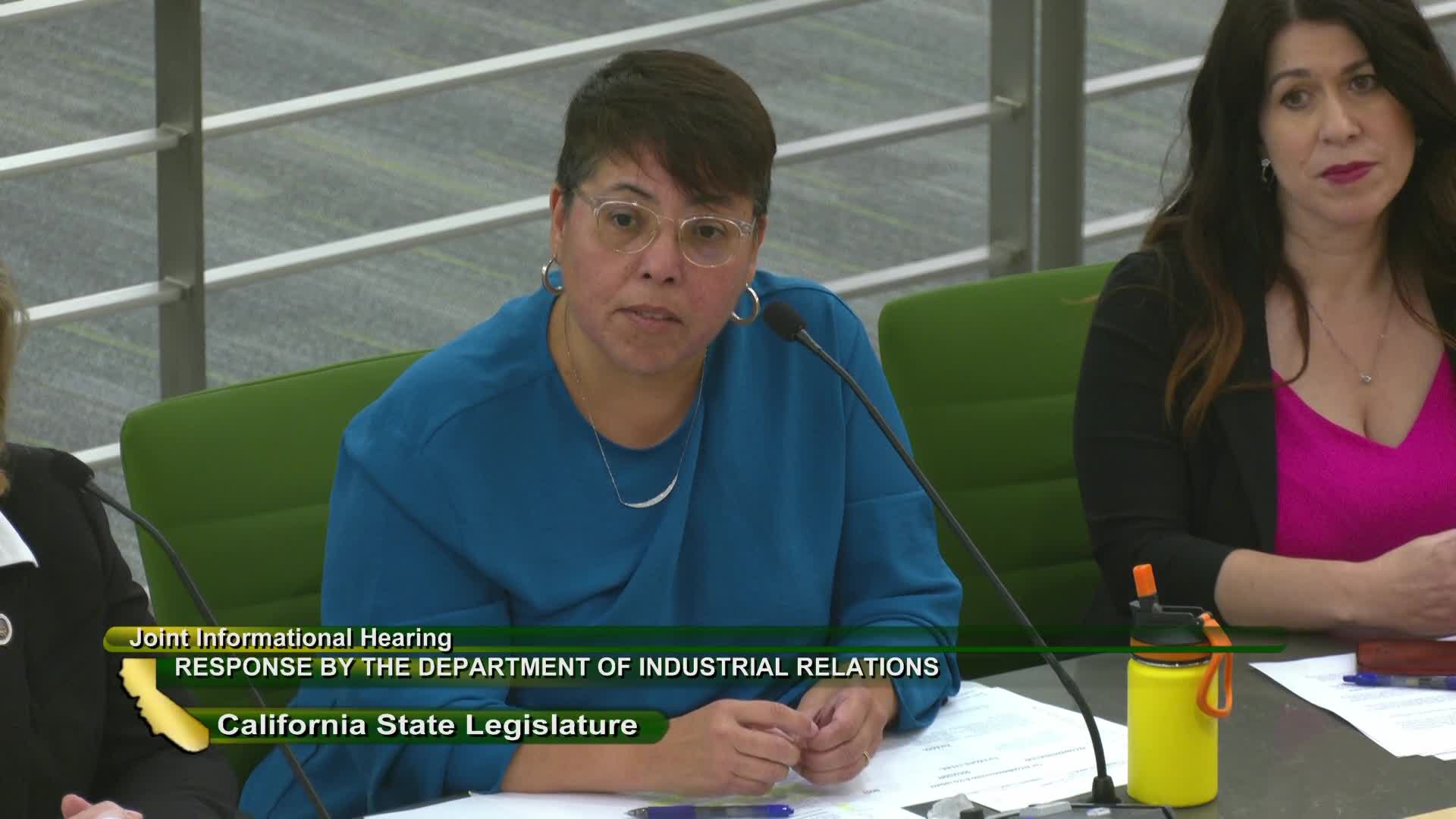Labor Agency Faces Staffing Crisis Amid Backlog of Claims
August 14, 2024 | California State Assembly, House, Legislative, California

This article was created by AI summarizing key points discussed. AI makes mistakes, so for full details and context, please refer to the video of the full meeting. Please report any errors so we can fix them. Report an error »

During a recent government meeting, officials discussed the ongoing challenges related to staffing and performance metrics within the labor department, highlighting significant vacancies and the impact on service delivery.
The meeting revealed that the department currently has 81 authorized deputy positions, with a vacancy rate of approximately 50%. Specifically, there are 28 vacancies for Deputy Labor Commissioner I, 30 for Deputy Labor Commissioner II, and 28 for Industrial Relations Representatives. Overall, the department has filled 215 out of 320 authorized positions, marking a vacancy rate of 38%, the lowest in recent years.
Officials acknowledged the need for improved performance metrics to manage caseloads effectively. A new standard has been set, requiring staff to conduct a minimum of 30 hearings and 40 conferences per month. However, it was noted that many staff members feel these expectations are unmanageable given their current workloads. The department has increased the number of supervisors and regional managers to address these concerns, but challenges remain in meeting the established metrics.
The discussion also touched on the historical backlog of claims, with officials expressing a desire to reduce processing times to an average of 135 days. However, they cautioned that without additional resources and tools, achieving this goal may be unrealistic. The department is currently undergoing a business process review to modernize its systems and improve efficiency.
In response to concerns about the vastness of the problem, officials emphasized the importance of community outreach and education to empower workers and enhance compliance. They are working with community leaders to bridge gaps and ensure workers understand their rights.
The California Labor Federation's general counsel highlighted the critical issue of vacancies, advocating for emergency hiring measures to expedite the filling of positions. An agreement has been reached to move forward with emergency hiring authority, which the Federation has long supported.
As the department navigates these challenges, officials remain committed to improving service delivery and addressing the needs of California's workforce. Regular updates on progress and metrics will be essential in holding the agency accountable and ensuring that it meets its obligations to the public.
The meeting revealed that the department currently has 81 authorized deputy positions, with a vacancy rate of approximately 50%. Specifically, there are 28 vacancies for Deputy Labor Commissioner I, 30 for Deputy Labor Commissioner II, and 28 for Industrial Relations Representatives. Overall, the department has filled 215 out of 320 authorized positions, marking a vacancy rate of 38%, the lowest in recent years.
Officials acknowledged the need for improved performance metrics to manage caseloads effectively. A new standard has been set, requiring staff to conduct a minimum of 30 hearings and 40 conferences per month. However, it was noted that many staff members feel these expectations are unmanageable given their current workloads. The department has increased the number of supervisors and regional managers to address these concerns, but challenges remain in meeting the established metrics.
The discussion also touched on the historical backlog of claims, with officials expressing a desire to reduce processing times to an average of 135 days. However, they cautioned that without additional resources and tools, achieving this goal may be unrealistic. The department is currently undergoing a business process review to modernize its systems and improve efficiency.
In response to concerns about the vastness of the problem, officials emphasized the importance of community outreach and education to empower workers and enhance compliance. They are working with community leaders to bridge gaps and ensure workers understand their rights.
The California Labor Federation's general counsel highlighted the critical issue of vacancies, advocating for emergency hiring measures to expedite the filling of positions. An agreement has been reached to move forward with emergency hiring authority, which the Federation has long supported.
As the department navigates these challenges, officials remain committed to improving service delivery and addressing the needs of California's workforce. Regular updates on progress and metrics will be essential in holding the agency accountable and ensuring that it meets its obligations to the public.
View full meeting
This article is based on a recent meeting—watch the full video and explore the complete transcript for deeper insights into the discussion.
View full meeting
